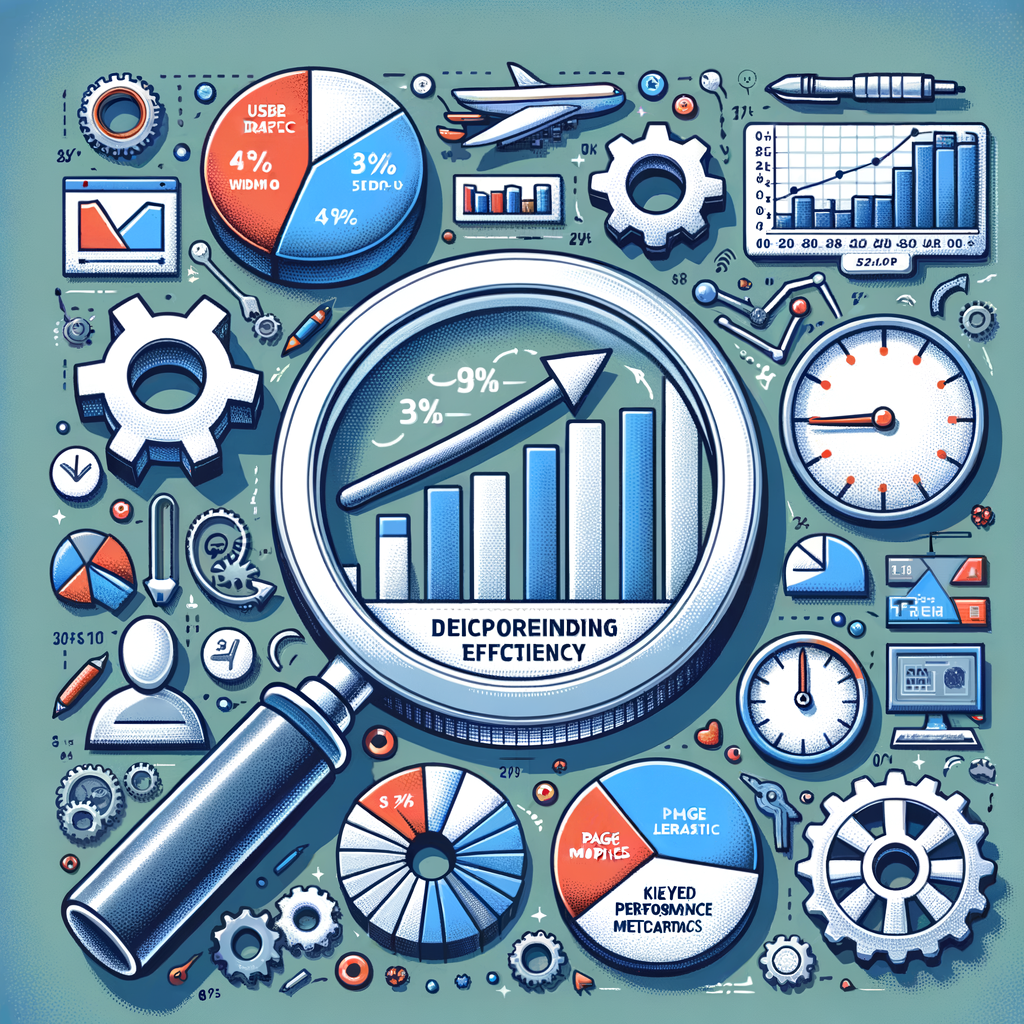In the digital age, a company’s website serves as its virtual storefront. Its performance goes beyond aesthetic appeal—it’s about its functionality, accessibility, and user experience. Given the increasing reliance on digital platforms for business growth, understanding website efficiency is more important than ever. This involves unpacking key performance metrics, translating complex data into actionable strategies, and consequently, enhancing the overall website efficiency.
Unraveling the Mystery: Understanding Key Website Performance Metrics
Website performance metrics are essential tools that provide vital insights into how your website is functioning. They allow you to measure various elements—from usability and visitor engagement to overall website health. The first step in understanding these metrics involves identifying the most critical ones. These include load time, time on site, bounce rate, pages per session, and conversion rate.
Load time is one of the most important website performance metrics. It refers to the speed at which your site loads content. A slow load time can frustrate users, resulting in a higher bounce rate—that is, the percentage of visitors who leave your site after viewing only one page. In a fast-paced digital world, speed is of the essence, and ensuring your website loads quickly can greatly enhance user experience.
Time on site, another crucial metric, measures how long a visitor stays on your site. A higher time on site typically indicates that visitors find your content engaging and relevant. Pages per session, on the other hand, refers to the average number of pages a visitor views during a single session. More pages per session imply that your site navigation is user-friendly and your content is engaging enough to encourage exploration.
Another important performance metric is the conversion rate. This measures the percentage of visitors who perform a desired action—whether it’s making a purchase, signing up for a newsletter, or filling out a form. A high conversion rate typically signifies that your website’s design and content are effectively compelling users to take action.
Lastly, regular monitoring of these performance metrics can provide an overview of your website’s health. This can help in identifying glitches or areas that need improvement. Essentially, these metrics serve as your roadmap, directing you towards enhancing your website’s efficiency.
Translating Data into Strategy: Enhancing Website Efficiency
Once you have a thorough understanding of key website performance metrics, the next step is to translate this data into actionable strategies. Start by identifying trends or patterns in your website’s performance metrics. For instance, if your site has a high bounce rate, it may indicate that your content is not engaging enough, or your site’s navigation system is complex.
Next, consider implementing strategies to improve your website’s load time. This could involve optimizing images, minimizing HTTP requests, or leveraging browser caching. Likewise, if your time on site or pages per session are low, consider improving your website’s content. This could mean creating more engaging and relevant content or improving site navigation to encourage exploration.
Furthermore, if your conversion rate is low, evaluate your website’s user journey. Does your site make it easy for visitors to perform desired actions? If not, consider ways to simplify this process—whether by reducing the number of steps required to complete a transaction, improving your call-to-action visibility, or bolstering your website’s overall aesthetic appeal.
It’s also essential to periodically evaluate your website’s health. Regular maintenance can help identify and fix issues before they escalate. This can range from ensuring your website is compatible with different browsers and devices, updating your site’s security measures, or continually optimizing your site’s SEO.
Enhancing website efficiency also involves adapting to change. The digital landscape is constantly evolving, and staying on top of the latest trends—from responsive design to voice search optimization—can give you a competitive edge.
Lastly, remember that improving website efficiency is not a one-time task. It requires consistent monitoring, evaluation, and optimization. By understanding key performance metrics and using them to inform your strategies, you can ensure your website is not only efficient but also effective in driving your business goals.
Deciphering website efficiency involves understanding key performance metrics and translating this data into actionable strategies. It’s about enhancing the load time, improving user engagement, optimizing the conversion rate, and maintaining the overall health of your website. Ultimately, an efficient website can provide a better user experience, foster customer loyalty, and drive business growth. By continually monitoring and optimizing your website performance, you can navigate the complex terrain of the digital landscape and stand out amongst the competition.
Please rate this post

With over 20 years of experience in the car business, I’ve navigated the evolution of the industry from traditional sales to the dynamic digital age. My journey through various roles in both sales and management has endowed me with a unique perspective on the challenges and opportunities in automotive sales today.
As the founder of Shawn Ryder Digital, I combine my extensive background in technology with my deep understanding of the automotive industry. This synergy allows me to craft digital marketing strategies that are not just effective but tailored to the specific needs of each dealership. My commitment is to drive your sales, enhance your brand awareness, and ensure your dealership thrives in the digital landscape.
Here at Shawn Ryder Digital, we’re not just about providing services; we’re about building partnerships. As I often say, “In the fast-paced world of digital marketing, staying ahead isn’t just an option; it’s a necessity.”
Together, let’s embrace the challenges of the digital age and turn them into opportunities for growth and success. Join me in redefining the future of automotive digital marketing. Let’s accelerate your dealership’s journey to the top.
